11 UX Strategies for Your Skincare Ecommerce Website
In this article, Freddie Loveday, Senior UI/UX Designer at Swanky, leverages his experience working with health and beauty brands across the globe to share some of his favourite strategies for creating an unblemished skincare ecommerce experience.
Written By
Freddie Loveday

The global skincare market is predicted to grow at a CAGR of just over 3% between 2023 and 2028, with revenue reaching US$210.71bn.1
A rapidly-growing wellness trend, thriving skincare ecommerce sector, and increasing influence of online content creators (or so-called ‘skinfluencers’) are just some of the factors behind this growth.
With competition fierce, it’s more important than ever for skincare brands to ensure they’re serving up a flawless, user-centric DTC experience.
In this article, I’ll be sharing 11 UX strategies to help online skincare retailers create an engaging and informative ecommerce site that builds trust, inspires conversions and nurtures loyalty.
Top tips for your online skincare store
1. Share educational content on your skincare site
What to do
- Use your website’s blog to provide informative articles and guides about skincare routines, ingredients and product usage.
- Even better, offer tips and recommendations based on different skin types or concerns.
Why it’s important
For consumers who aren’t well-versed in skincare best practices or the science behind different skincare ingredients, educational content can help them understand their skin type, common issues, and how different products work in tandem as part of an effective skincare routine.
This knowledge empowers consumers to make informed decisions around which products are best for them. This is extremely valuable for shoppers in the skincare industry, who typically face an overwhelming amount of choice.
Informative content can also establish your brand as an authority in the skincare space. When users perceive a brand as a valuable and credible source of information, they are more likely to trust and engage with its products. This can lead to increased brand loyalty and retention, as well as customer advocacy.
It’s also worth noting the benefits of content marketing for visibility on SERPs (search engine result pages). A unique, helpful, keyword-optimised hub of content on your website – where content aligns with the search intent of users – can serve as a valuable tool for increasing your rankings and aiding the acquisition of traffic to your site.
Examples
An example of a brand in this space successfully leveraging content is clean skincare company Pai, whose ‘The Pai Life’ blog shares skincare tips and wellbeing guides.
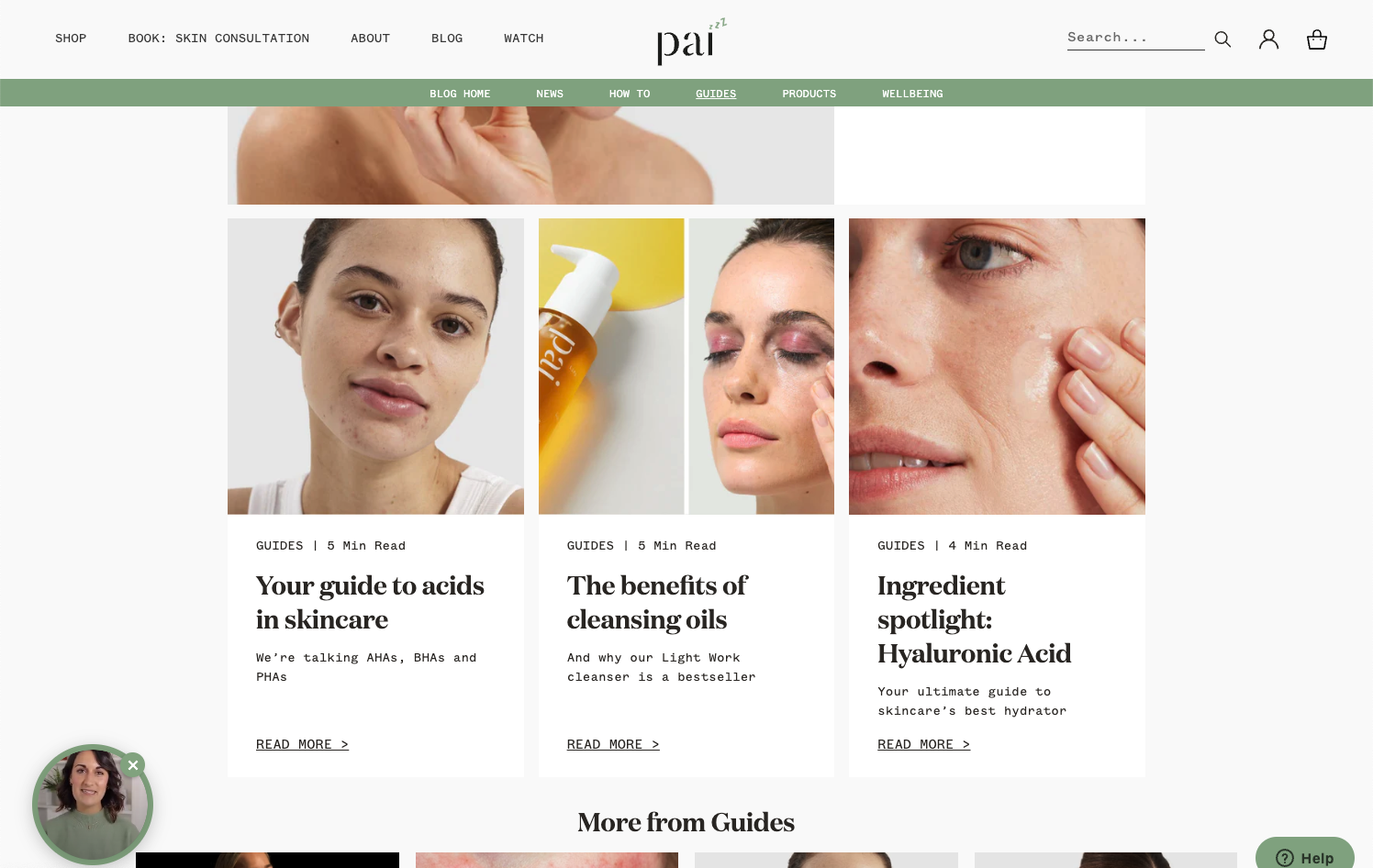
Furthermore, Swanky client 82°E, an Indian self-care start up founded by Bollywood star Deepika Padukone, leverages an educational and inspirational on-site journal to build trust as a new brand.
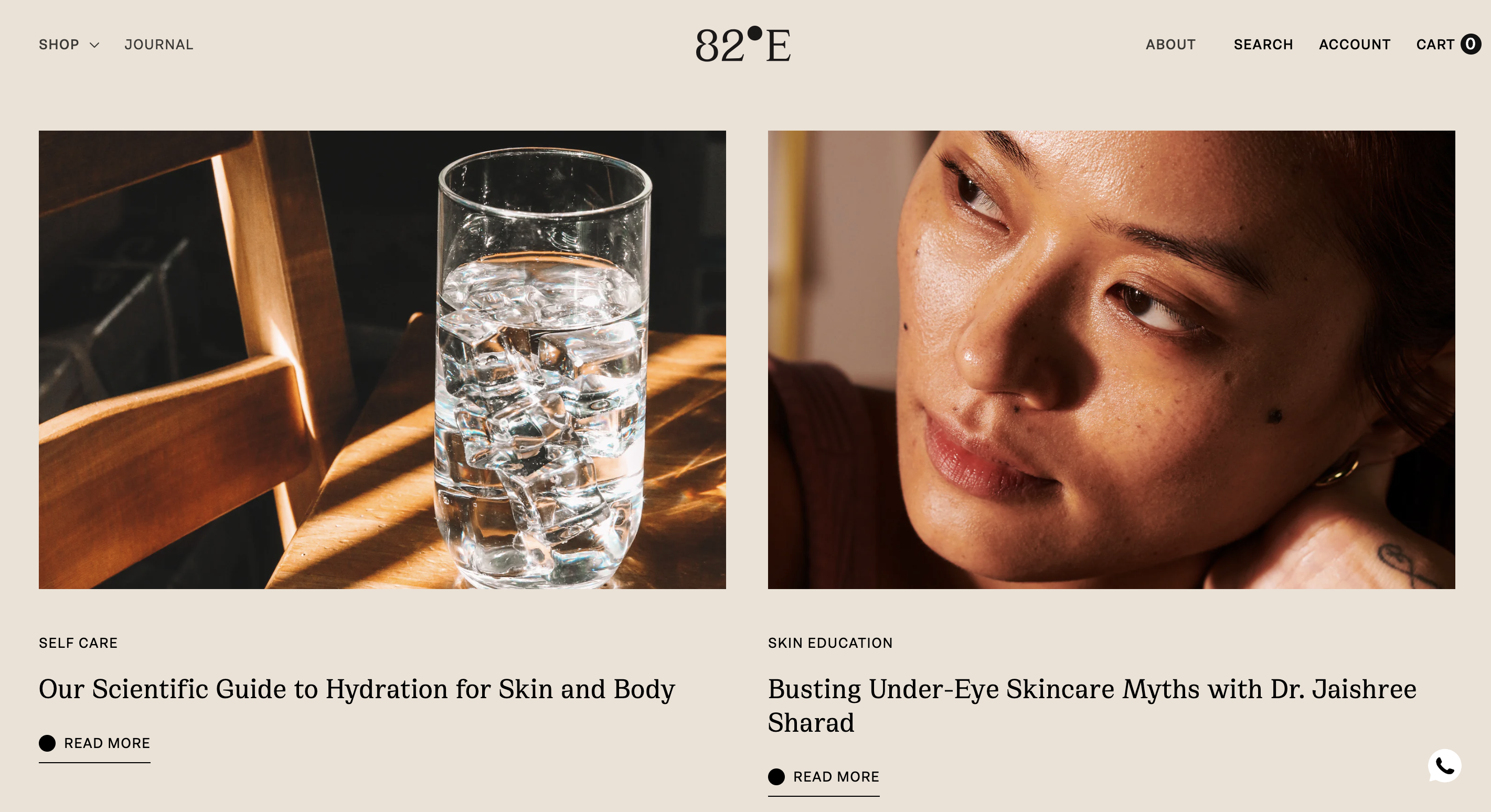
2. Include filtering and sorting functionality
What to do
- Allow users to filter products by things like skin type (e.g. oily, dry), concern (e.g. acne, fine lines), ambition (e.g. clearer skin, reduced redness) and product category (e.g. cleansers, moisturisers).
- Implement sorting options by popularity, price and customer ratings.
Why it’s important
Needs-based navigation allows users to quickly narrow down their choices to products that are relevant to their specific skincare needs or goals, streamlining the path to purchase. For example, someone with oily skin can easily filter out products not suitable for their skin type, ensuring they only see options that address their primary skincare goals more effectively. This confidence in product selection can lead to increased conversion rates.
What’s more, data on a user’s filtering behaviour can be stored and used to target them with relevant messaging and content in the future. Providing a personalised ecommerce experience like this can be an effective way of increasing customer satisfaction, driving sales and nurturing loyalty.
We talk more about the importance of streamlined product discovery in our guide to a successful online beauty store.
Example
An example of a skincare ecommerce website with effective navigation is that of international retailer Aesop, provider of high quality skin, hair and body formulations.
The brand’s skincare landing page allows shoppers to browse by product type and by skin type:

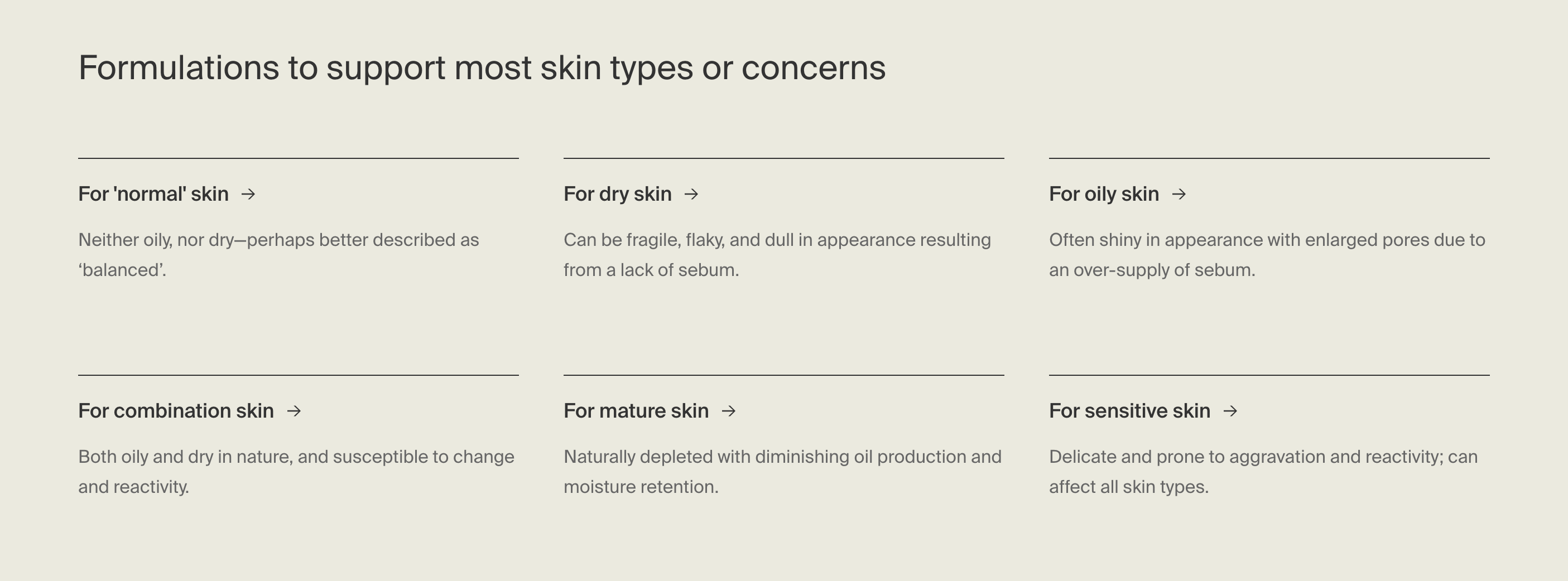
3. Provide personalised recommendations
What to do
- Offer quizzes or surveys to recommend products based on a user’s skincare needs.
- Implement a “My Skincare Profile” feature for logged-in users.
- Send personalised product recommendations and promotions via email.
Why it’s important
Product quizzes and surveys ask shoppers questions about their individual needs, making users feel valued. This can improve customer satisfaction and encourage advocacy.
By gathering information about a user’s skin type, concerns and preferences, you can offer highly tailored product recommendations. This increases the likelihood that users will find products that work well for their specific needs and can boost their confidence in making the right choices.
You can also leverage quiz data to provide personalised interactions later on in the customer journey – which is important for making shoppers feel connected to your brand.
Plus, the zero-party data collected from quizzes and surveys can provide valuable insights into user preferences and industry trends. This information can inform product development and marketing strategies.
Example
Prescription skincare brand Dermatica leverages a quiz as part of its consultation service, the answers to which inform the product formulation recommended to users.
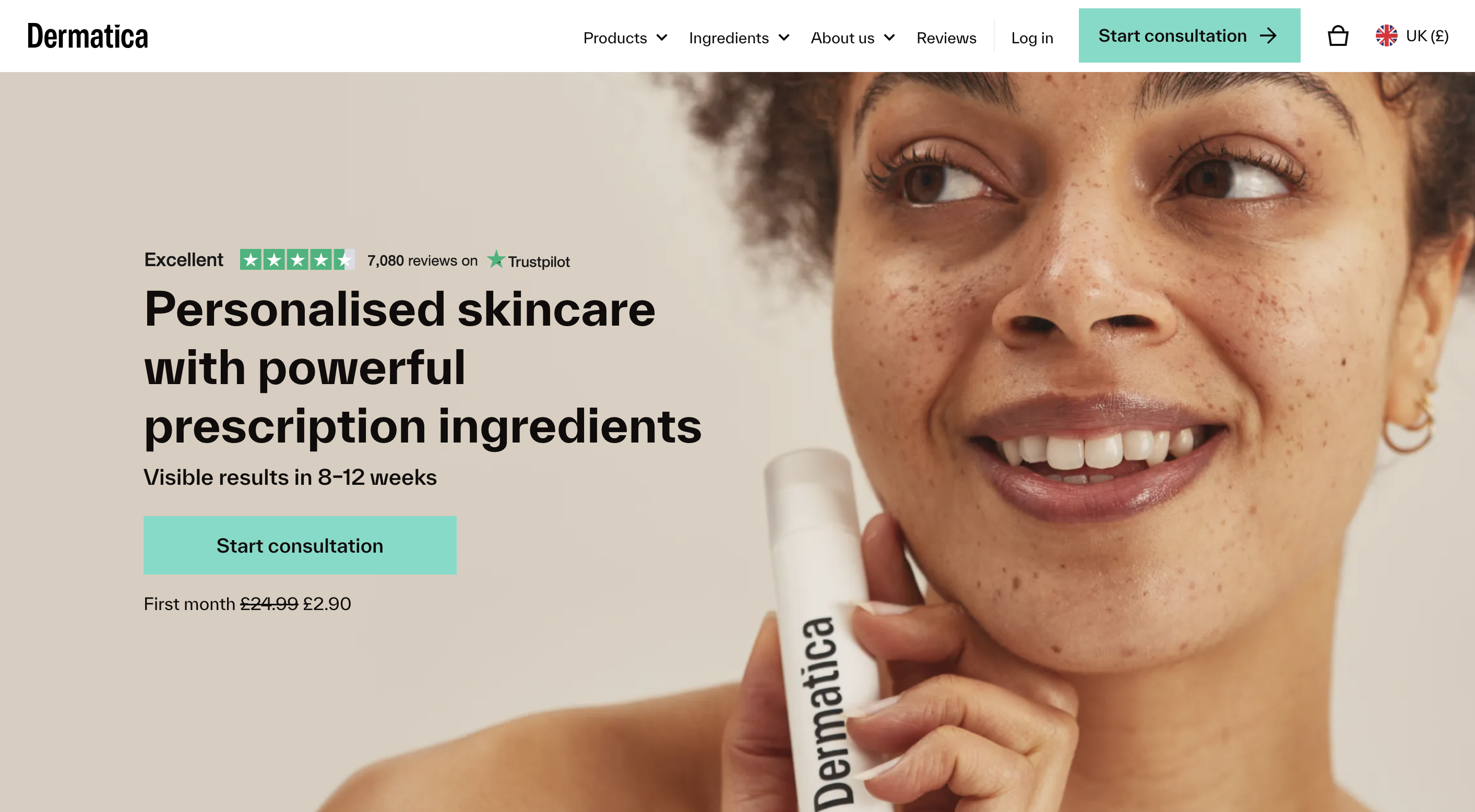

4. Be transparent about skincare ingredients
What to do
- Clearly list product ingredients, their benefits and any potential allergens.
- Include information on how ingredients are sourced and their sustainability.
Why this is important
When consumers have access to comprehensive ingredient information, they can make informed decisions about which products are suitable for their skin type and concerns. This helps them choose products that align with their specific needs, increasing the likelihood of satisfaction with their purchase and reducing the risk of skin irritation, redness, or other allergic responses.
Shoppers who may be concerned about avoiding harmful or controversial ingredients, such as parabens or sulphates, can identify products that meet their criteria. This caters to the growing demand for clean and natural skincare options.
Many consumers are increasingly interested in the environmental impact of their beauty and cosmetics choices. They typically vote with their wallets, purchasing from brands who share their values. Information about where your ingredients have been sourced and how they’ve been tested will resonate with these conscious consumers.
Ultimately, being transparent about what your products contain and how sustainable they are will help to position your brand as a trustworthy and authentic retailer.
Examples
Here, HydroPeptide, a BLC brand, clearly displays the ingredients in its ‘Cashmere Cleanse Facial Rose Milk’ product. Note how the page also highlights that the cleanser is formulated without parabens, phthalates and sulphates.
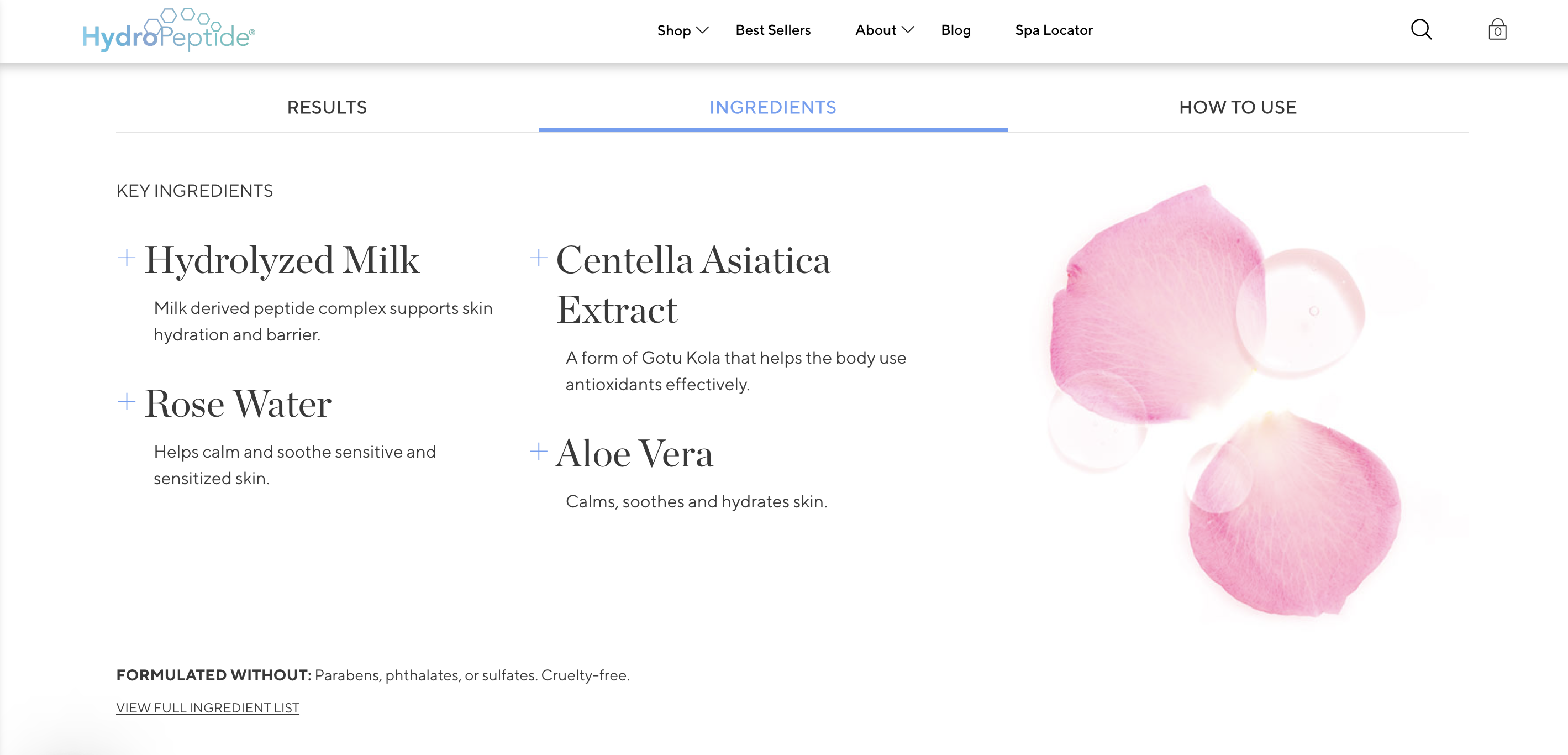
And in this example, fellow BLC brand Thalgo has a page dedicated to its commitments, including its natural-origin products.
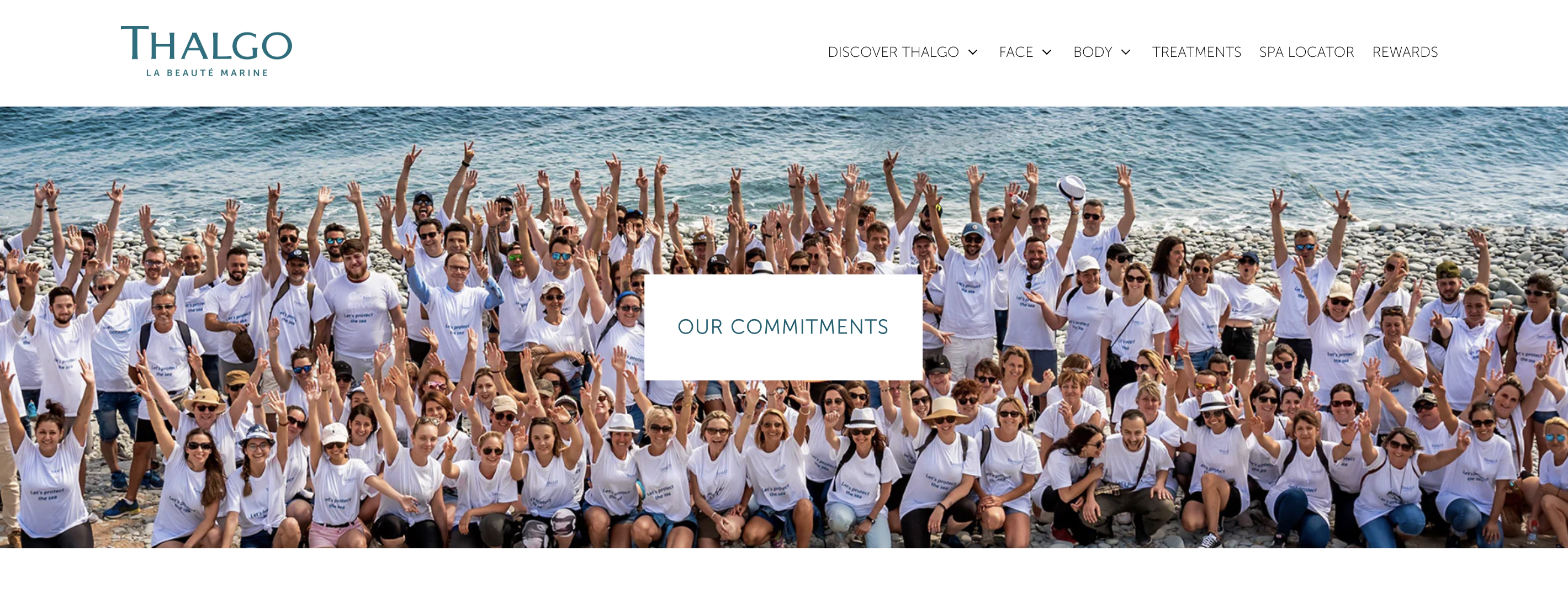
5. Capture and display product reviews and testimonials
What to do
- Allow customers to leave detailed reviews and ratings for skincare products.
- Display reviews that are most relevant to a shopper’s individual needs to maximise their impact (e.g. share reviews from users with the same skin type).
Why it’s important
Authentic user reviews and product ratings build trust in your brand and its offering. Consumers are more likely to trust the opinions of their peers over marketing claims, leading to increased confidence in product selection. This is particularly pertinent in the skincare industry, where we rely more heavily on the experiences of our peers who have previously used a product.
Reviews often include detailed accounts of how a product performed, its impact on specific skin concerns, and any visible results. This information helps consumers gauge whether a product is likely to address their unique needs effectively.
Example
The Shopify-powered website of Fenty Beauty uses Yotpo to display layered reviews that can be filtered by things like age, skin concern and skin type, helping prospective customers find the reviews that are most relevant to them.
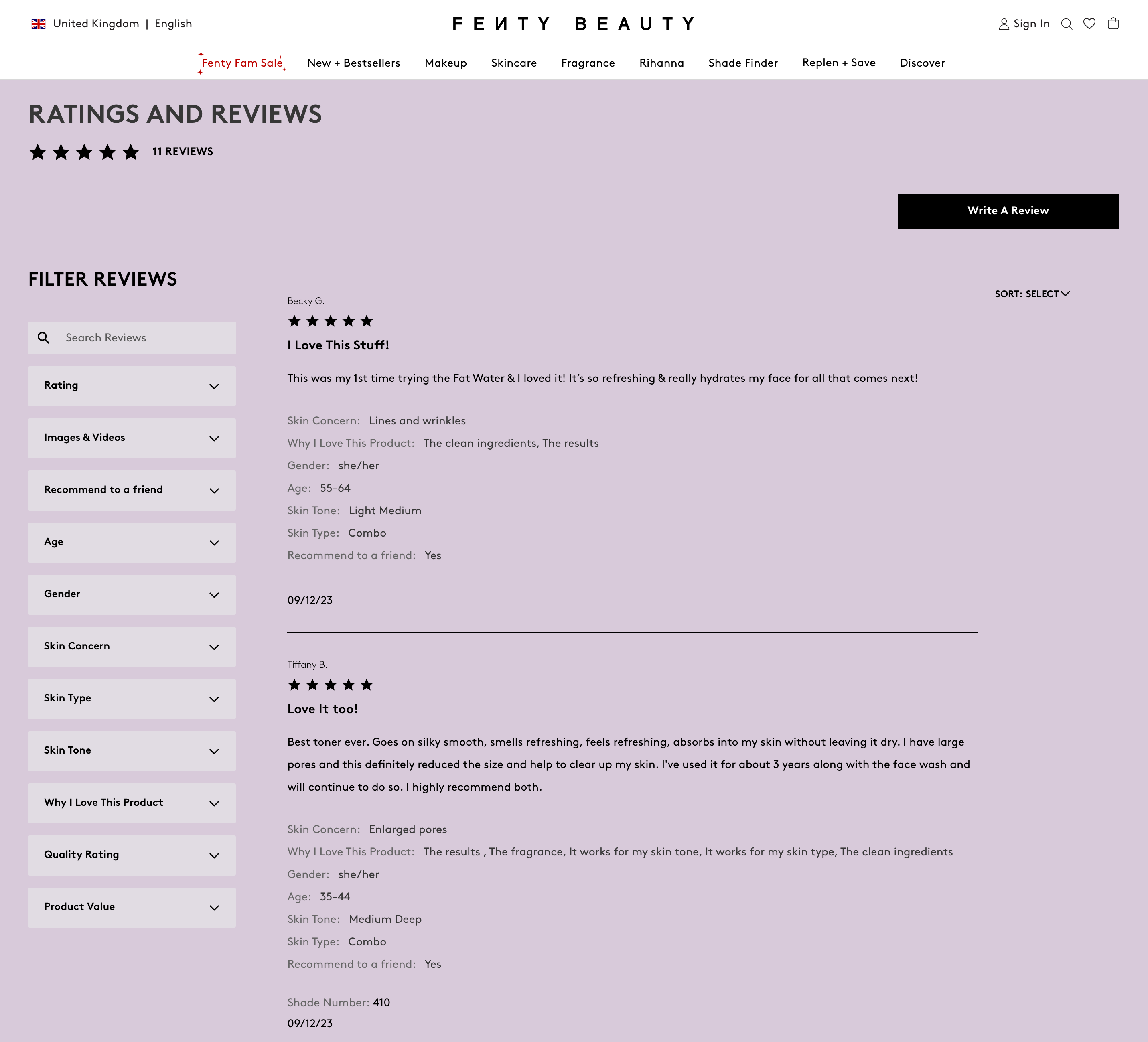
6. Collect and curate user-generated content
What to do
- Encourage customers to share their skincare routines and experiences on social media using specific hashtags or mentions.
- Curate user-generated content (UGC) on your website to build trust and authenticity.
- Showcase before-and-after photos and testimonials from satisfied customers.
Why it’s important
Closely linked to the sharing of reviews and ratings is the concept of showcasing UGC.
Sharing skincare experiences fosters a sense of community among users who may be facing similar skincare challenges. It allows them to connect, support one another and share advice. Encouraging customers to share their routines empowers them to take ownership of their skincare journeys, validating their experiences and insights.
For skincare retailers, UGC is important because it can spark conversations and encourage word-of-mouth marketing. It serves as social proof of a product’s effectiveness, which can sway potential customers and lead to increased conversions.
Positive transformations in before-and-after photos can inspire users, giving them hope that they can achieve similar results by using the showcased products. This type of social proof can be much more impactful than a written review, influencing users to make a purchase and ultimately boosting checkouts.
Example
Popular skincare ecommerce brand Skin+Me leverages visual user generated content to demonstrate the effectiveness of its products. Before-and-after photos are displayed across the brand’s online store, as well as its social channels.
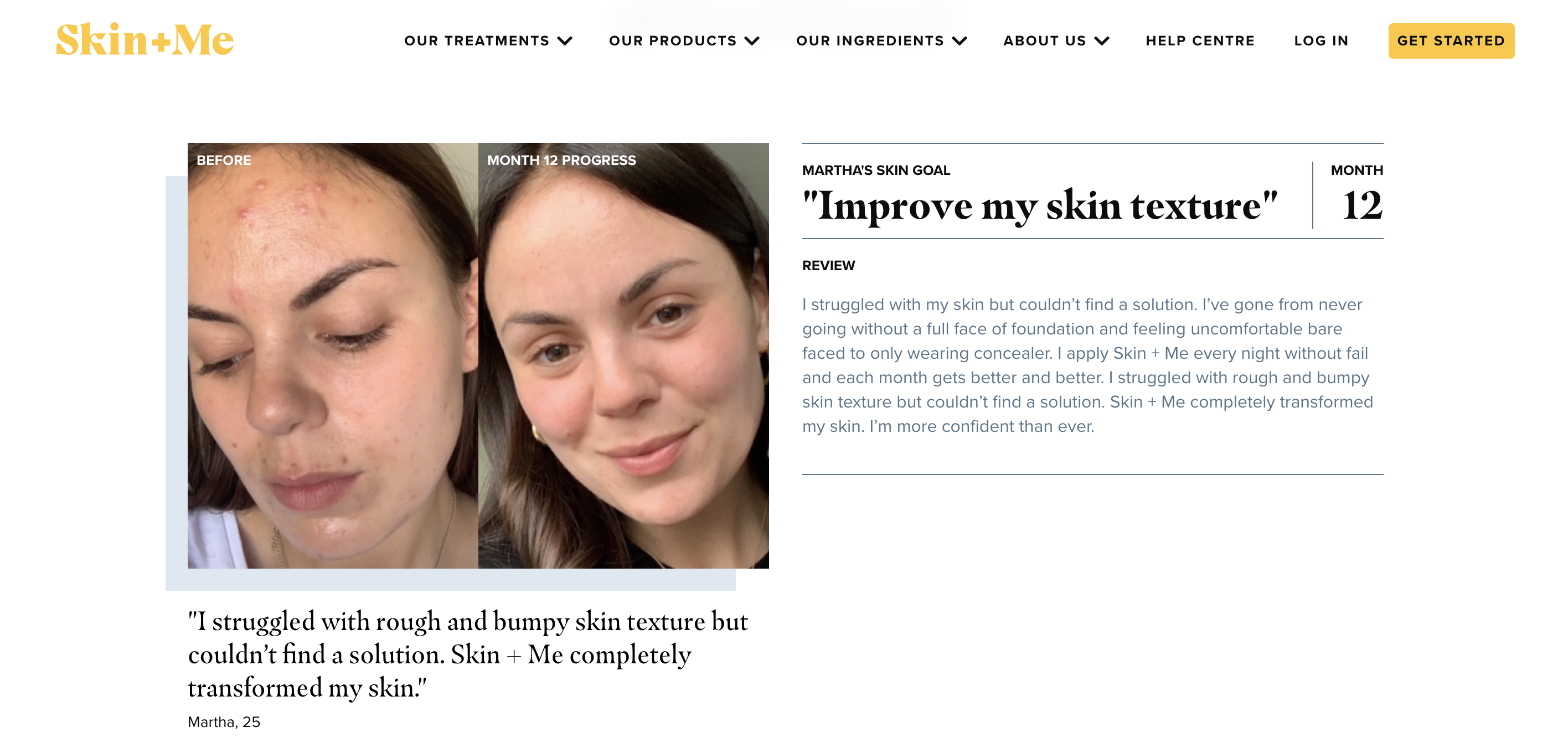
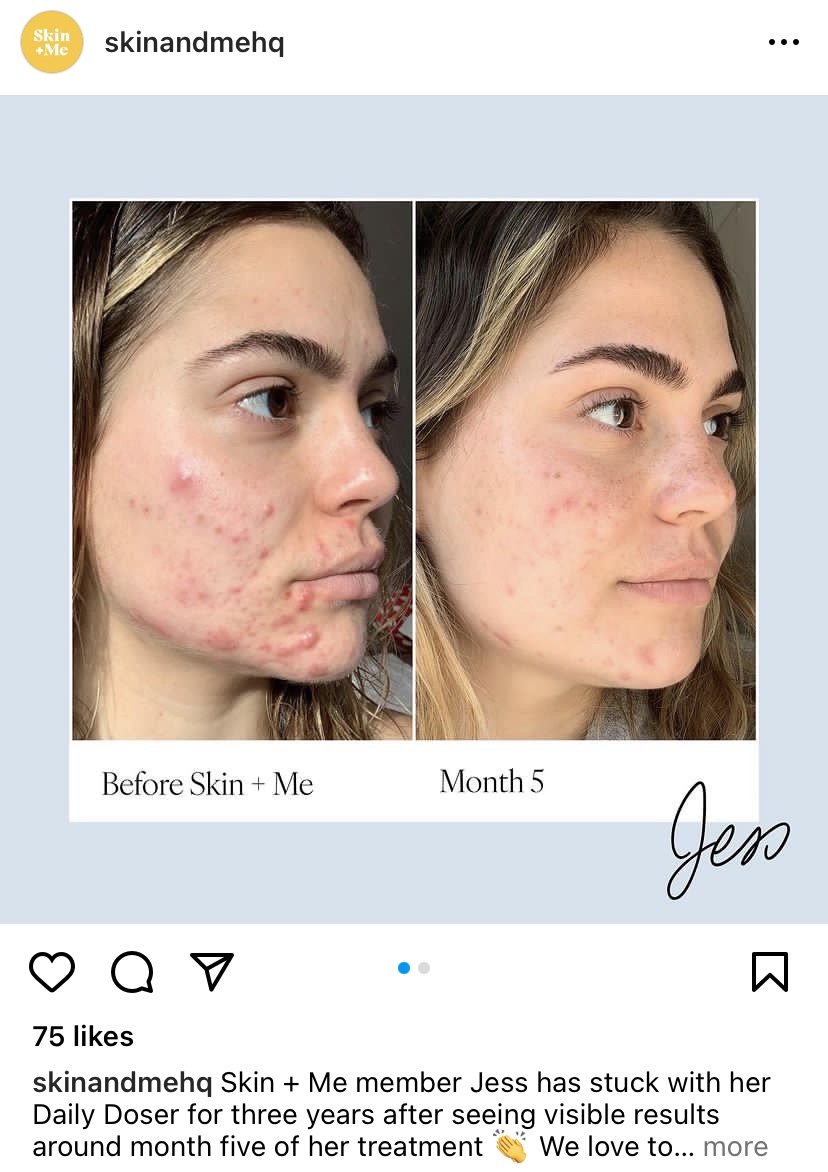
7. Provide visual product demonstrations
What to do
- Include video demonstrations or tutorials on how to use products effectively.
- Show product texture and application on different skin types.
Why it’s important
Videos provide a visual and step-by-step guide on how to use products, offering clarity and reducing any confusion that written instructions alone might cause.
Watching a video can help shoppers understand proper application techniques, ensuring they get the most out of the product and maximise its potential.
Furthermore, visual demonstrations of product texture and application on diverse skin types help consumers develop realistic expectations of how the product will perform on their own skin.
For skincare ecommerce brands, this leads to enhanced user experience, increased brand authority, reduced support enquiries, more content marketing opportunities, and increased customer engagement.
Examples
Look no further than science-driven skincare brand Dr Sam’s for an example of a product video tutorial in action. YouTube videos are integrated into product pages, giving shoppers a helpful step-by-step guide to usage.
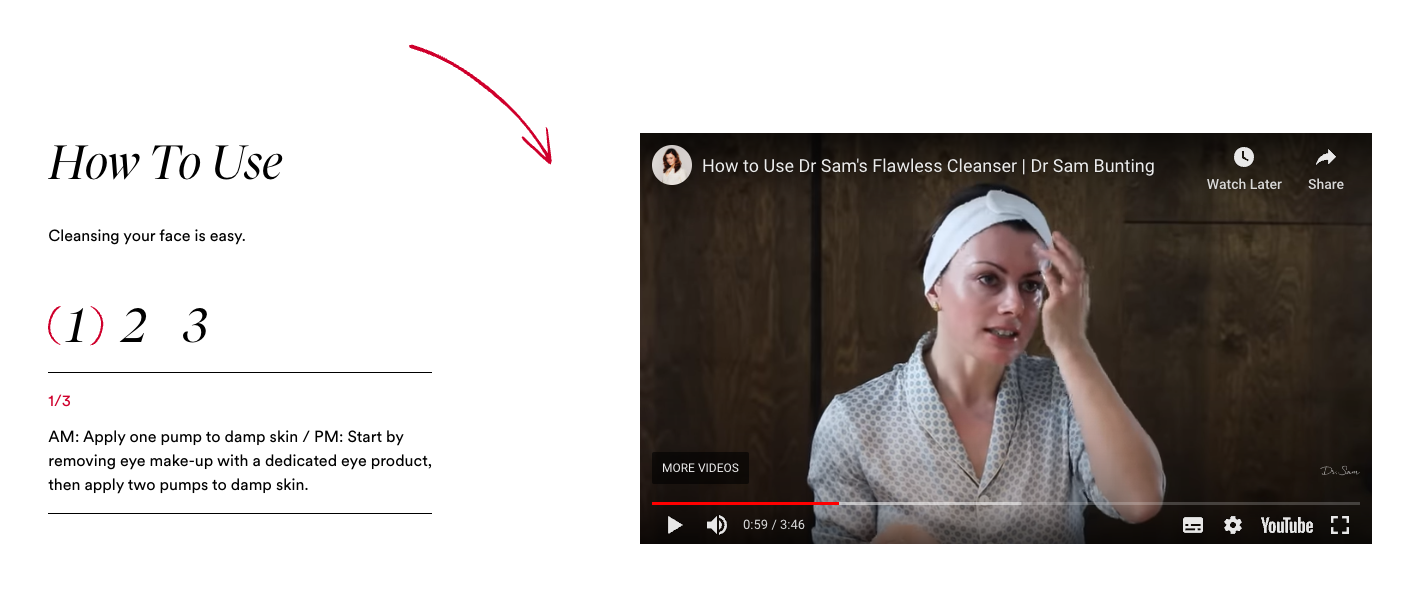
Meanwhile, women’s skincare company Alpha-H pairs simple video content with ‘good to know’ information to enrich the customer experience of product pages. In this particular example, shoppers can easily get a sense of the texture and viscosity of this cleansing balm.
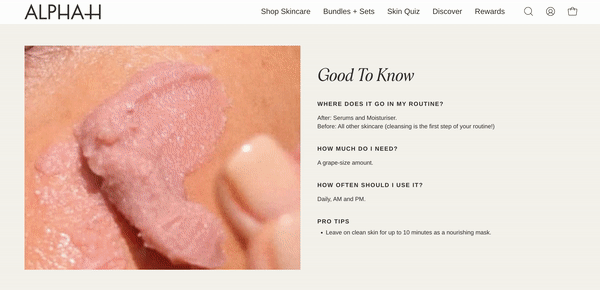
8. Include scent descriptions
What to do
- Describe the scent of your products to help users choose items that align with their preferences.
- Use iconography to convey this information at a glance.
Why it’s important
Scent preferences are highly personal, especially when it comes to products that we put on our face. Scent descriptions allow users to select products that match their individual preferences, enhancing the overall sensory experience of using the product.
For instance, some shoppers may seek skincare products with specific scents for aromatherapy or relaxation purposes. Descriptions can help them find products that suit their desired mood or therapeutic needs.
Alternatively, some consumers may prefer to use unscented skincare products. Communicating which of your products fit this bill, and allowing users to easily access these items, can help provide an improved experience for these shoppers.
Skincare ecommerce brands that provide accurate and detailed scent descriptions are more likely to meet customer expectations, leading to higher levels of customer satisfaction and reducing the likelihood of returns due to dissatisfaction with the product’s scent.
Example
Self-care brand Blume includes a scent description on each product page.
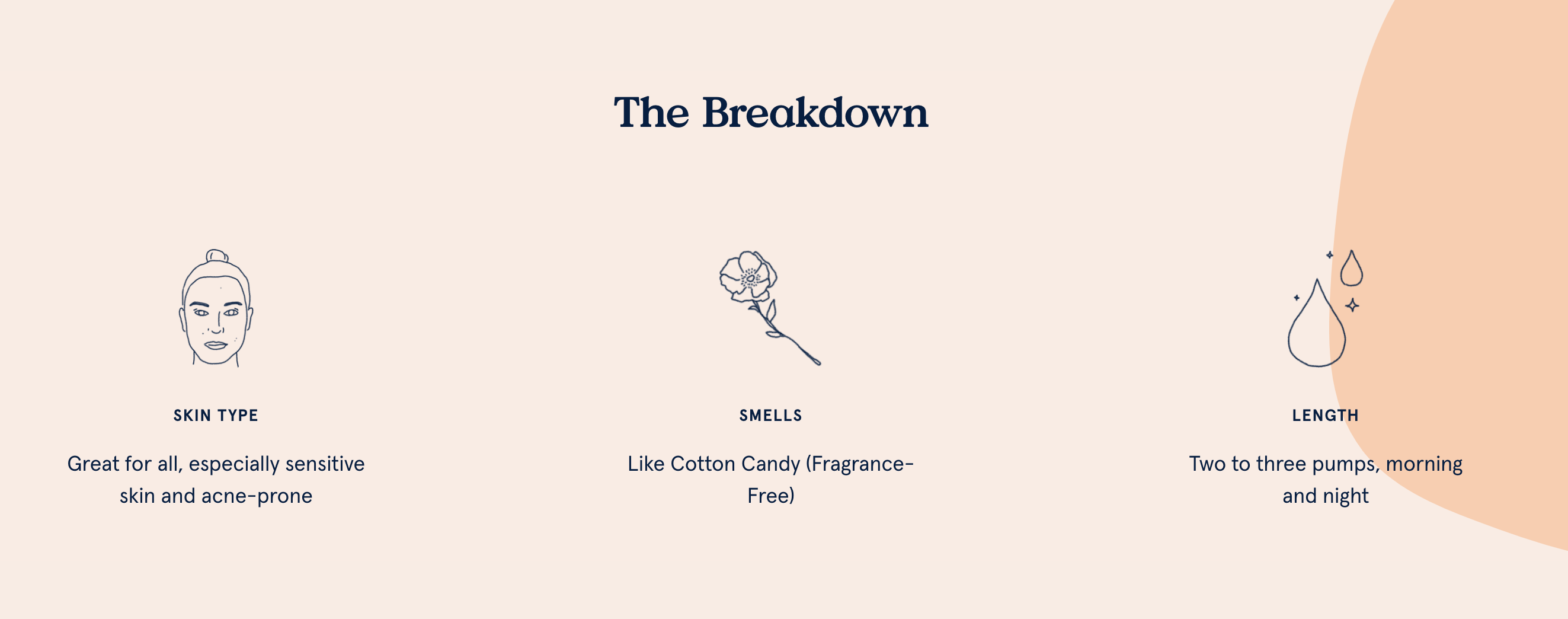
9. Offer a subscription option
What to do
- Offer a replenishment subscription (a subscribe and save model), allowing users to automate their recurring purchases.
- Create a clear and concise subscription landing page that explains how your model works and why it’s worth signing up to.
- Allow subscribers to easily edit, skip, pause and even cancel their subscription via a user-friendly customer portal.
- Maintain regular communication with subscribers through subscription notifications and updates, keeping them engaged with your brand and its products.
Why it’s important
Skincare products tend to be purchased on a regular basis, making them a great fit for a subscribe and save model.
Subscription models simplify the replenishment process, saving your customers time and effort. Shoppers no longer need to remember to reorder products manually; instead they can relax knowing they have a consistent and automated supply of their favourite skincare products scheduled for delivery.
As well as benefits for consumers, there are also advantages of a subscription model for retailers to consider. These include reduced customer acquisition costs, better retention metrics and easier revenue forecasting. Subscription models often lead to reduced customer churn too, as shoppers are less likely to switch to competing brands when they have automated deliveries. The ability to upsell to subscribers is also increased.
Example
Men’s skincare brand Bulldog leverages Recharge to offer a subscribe and save option to shoppers. Crucially, subscribers can control the frequency of their subscription, with flexibility at their fingertips.
The brand’s Shopify store has an accessible subscription landing page, complete with clearly illustrated benefits, FAQs and multiple CTAs (calls to action).
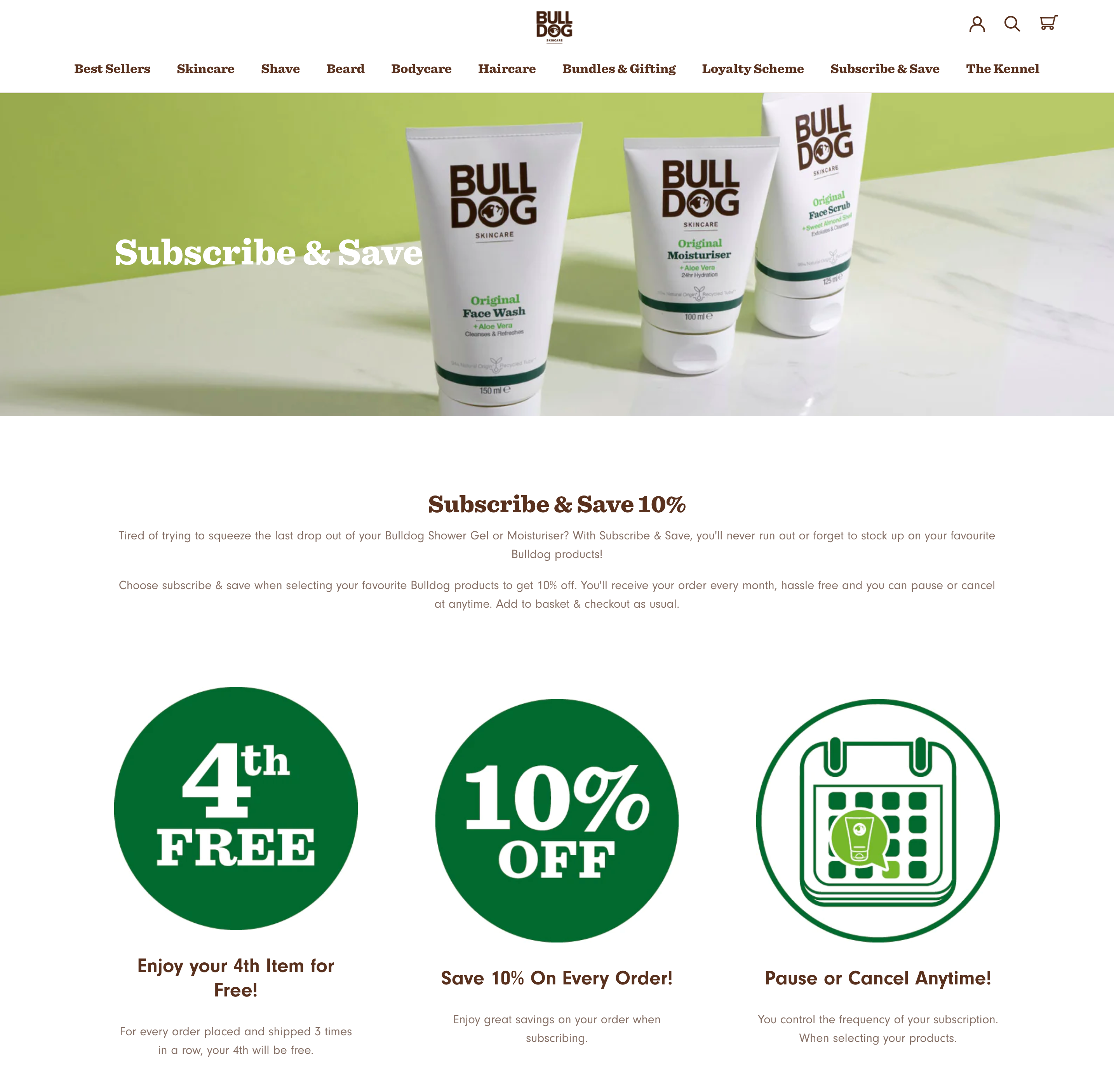
10. Employ a product bundling strategy
What to do
- Create bundles of products that are often bought together – like products that together form a complete skincare routine.
- Use copy, imagery and iconography to highlight the value of bundles.
Why it’s important
A product bundling strategy presents many benefits for retailers. These include boosting average order value, driving revenue and increasing awareness of products.
For customers, bundles streamline the skincare shopping process by providing a complete set of products needed for a specific routine or goal. Users don’t have to search for individual items separately.
Bundles can also aid product discovery, giving shoppers visibility of products they may be unfamiliar with.
Example
Australian skincare brand Bangn Body offers a variety of money-saving bundles on its ecommerce store, each targeted to a different concern or need, like reducing breakouts or hydrating the skin.
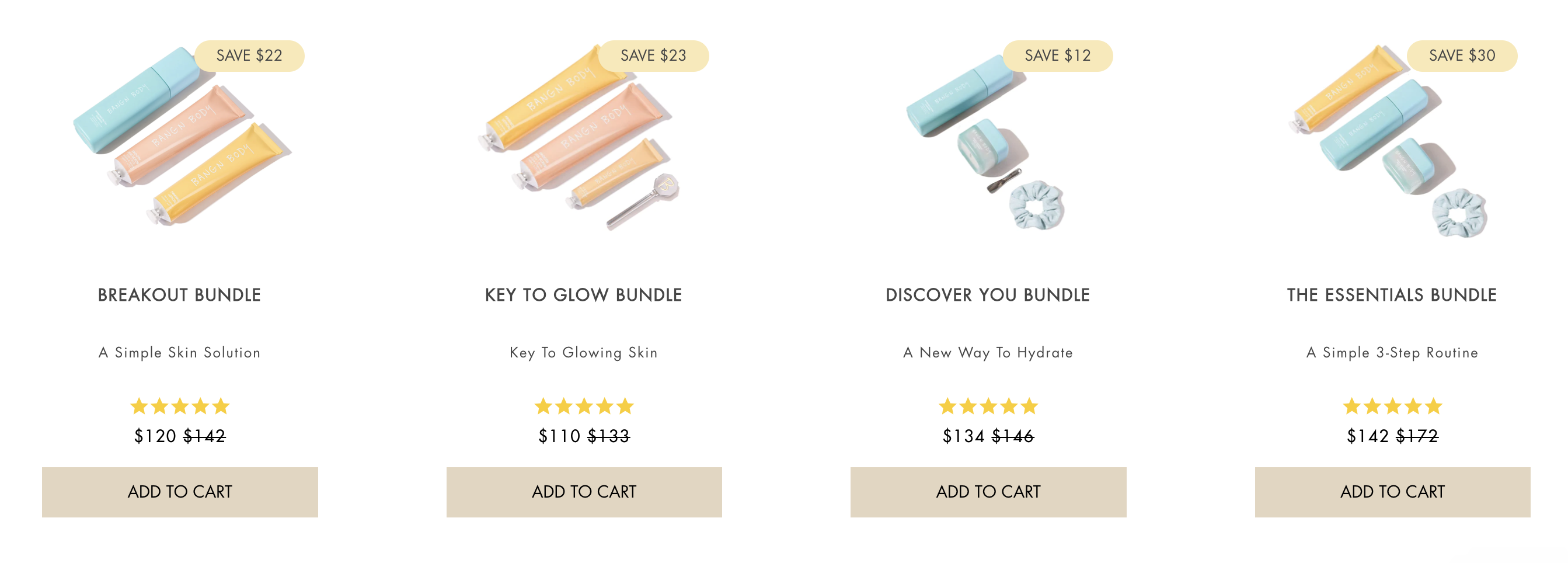
11. Showcase third-party endorsements and accreditations
What to do
- If your brand or products have been featured by any relevant organisations (e.g. beauty magazines or news outlets), display their logos in a prominent position on your skincare ecommerce site.
- Add logos of any awards or accreditations your brand or products have received.
Why it’s important
These are excellent examples of ecommerce trust signals. They quickly communicate credibility to potential customers, boosting their confidence in the ability of your products to live up to your marketing claims.
This is especially important in the skincare industry with its high competition. Awards are a particularly effective way to differentiate your products from similar offerings in this space.
Example
Wellness brand Rae provides a good example of this, with third-party logos placed strategically on its ecommerce store’s homepage.
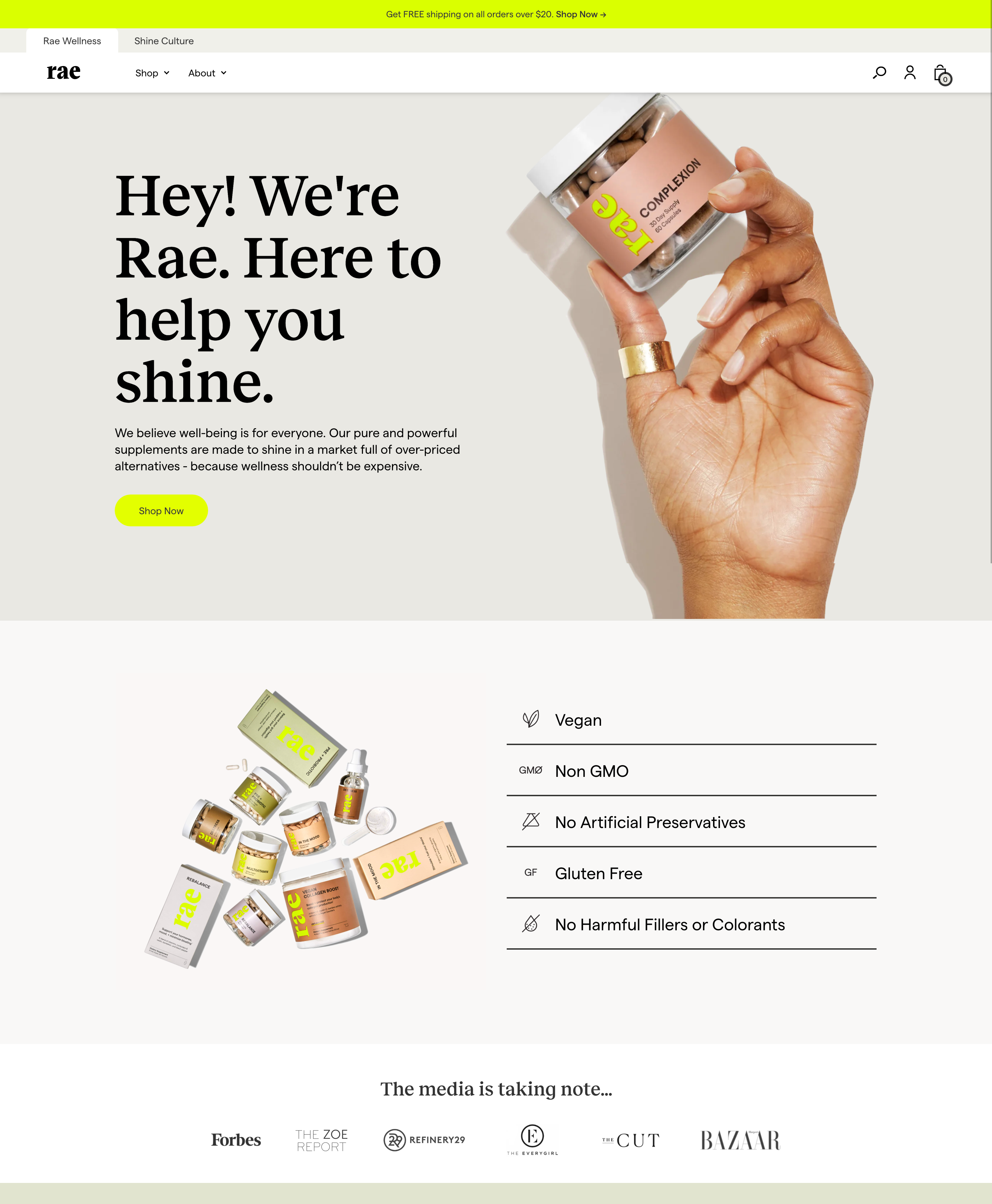
Enhance your skincare ecommerce site with Swanky
Leveraging our unique formulation of UX best practice, technical innovation and commercial acumen, we’ve provided ecommerce support to beauty and cosmetics brands all over the world. From migration and web design to conversion rate optimisation and digital marketing, we offer a full range of services to challenger brands and enterprises alike.
To find out how our award-winning team can elevate your skincare brand’s ecommerce experience, contact our Shopify Plus Experts today.
For reference:
[1] https://www.statista.com/outlook/cmo/beauty-personal-care/skin-care/worldwide

